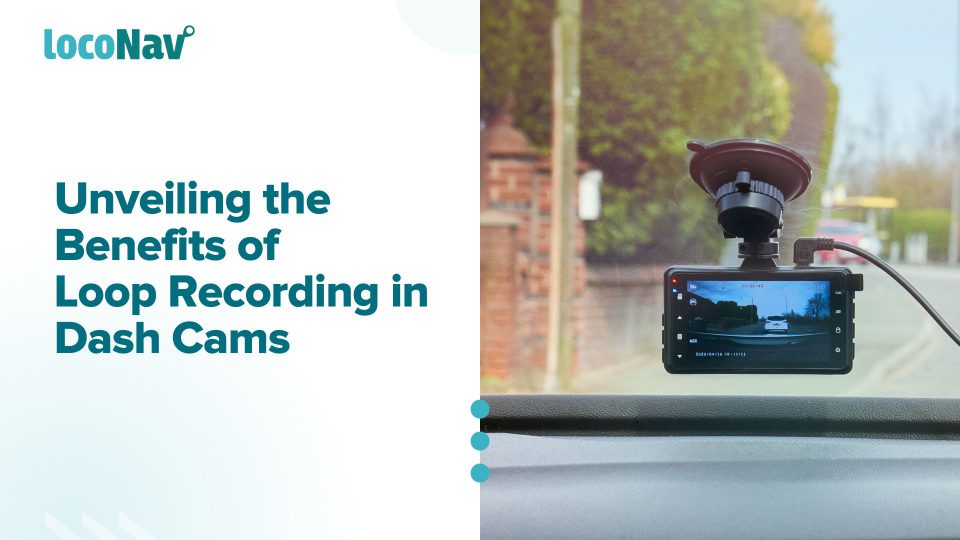

Dash cams are invaluable tools for both everyday drivers and fleet managers. These compact devices, strategically mounted on a vehicle’s dashboard or windshield, serve a multitude of purposes, from recording memorable road trips to providing crucial evidence in case of accidents. One key feature that sets many dash cams apart is loop recording. In this blog, we’ll delve into what a loop recording dash cam is, how it works, and why it’s a must-have for enhancing your driving experience and safety.
What is Loop Recording?
Before we delve into loop recording, let’s address the fundamental issue it solves: storage limitations. Dash cams continuously record footage, which, if stored in its entirety, would quickly consume storage space. This is where loop recording comes into play as an ingenious solution.
How Loop Recording Works
A loop recording dash cam is designed to overwrite old video footage with new recordings in a seamless loop, ensuring that the camera always has the latest footage without running out of storage. Here’s how it works:
- Continuous Recording: When you start your vehicle and activate the dash cam, it begins recording video footage onto a removable storage device like an SD card or internal memory.
- Segmented Video Files: The recorded footage is divided into manageable segments, usually lasting a few minutes each. These segments ensure that even if an incident occurs, the footage is preserved in easily accessible chunks.
- Overwriting Oldest Files: As the storage device fills up, the dash cam automatically starts overwriting the oldest video files with new recordings. This process is seamless and doesn’t require any manual intervention.
Key Benefits of Loop Recording Dash Cams
Now that we understand how loop recording works, let’s explore why it’s a valuable feature:
-
- Continuous Protection: Loop recording ensures that your dash cam is always ready to capture new events. There’s no need to worry about running out of storage space during a long drive.
- Incident Documentation: In the unfortunate event of an accident or unexpected incident, loop recording ensures that the crucial moments leading up to and following the event are recorded and preserved.
- Efficient Storage Usage: Loop recording optimises storage usage by overwriting old footage that is no longer needed. This means you can capture a significant amount of driving history without the hassle of managing storage manually.
- Set and Forget: Once you set up your loop recording dash cam, it operates seamlessly in the background. There’s no need to constantly delete files or replace storage cards.
- Configurable Settings: Many loop recording dash cams offer configurable settings, allowing you to tailor the recording behaviour to your preferences. You can typically adjust the length of recording segments and choose whether to protect specific segments from being overwritten manually.
Your Reliable Witness on the Road
A loop recording dash cam is not just a gadget; it’s your reliable witness on the road. It ensures that your driving experiences, both ordinary and unexpected, are documented efficiently and without interruptions. Whether you’re capturing the beauty of a scenic drive or need evidence in case of an accident, a loop recording dash cam has you covered. So, as you navigate the world of dash cams, consider this ingenious feature for added peace of mind and enhanced safety during your journeys.